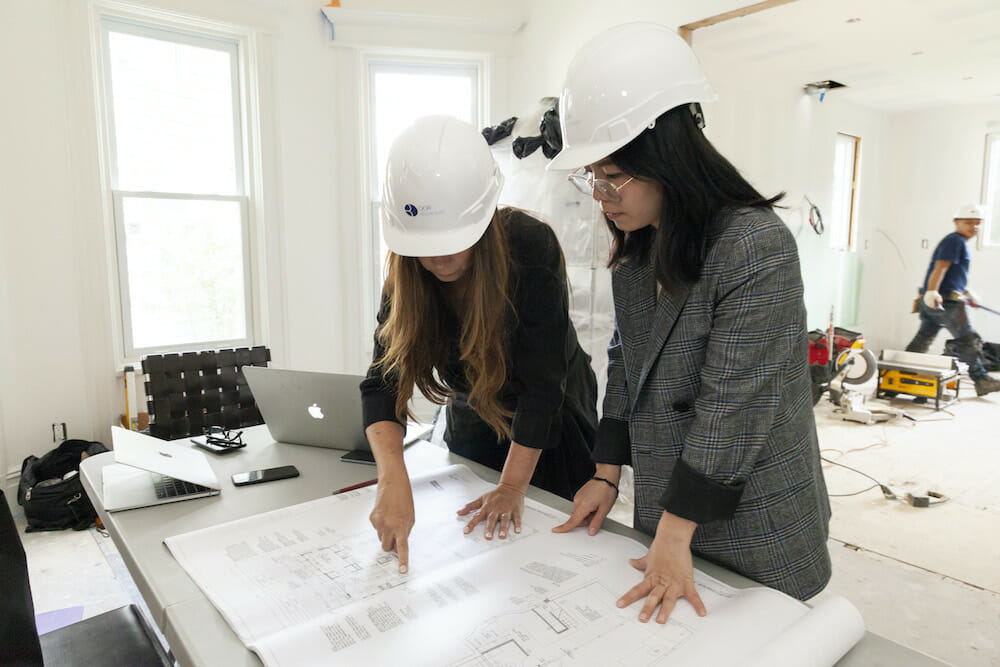Architect Collaboration Tips for Working with Engineers and Contractors
Architect Collaboration Tips for Working with Engineers and Contractors
Blog Article
Understanding the Diverse Profession Paths Available for Aspiring Architect
As an ambitious Architect, you have a globe of occupation paths waiting for you. Whether you're drawn to traditional design or the nuances of sustainable design, there's a particular niche that lines up with your passions.
Conventional Design: Designing Structures and Frameworks
Conventional design focuses on developing buildings and structures that blend capability with visual appeal. Your layouts can reflect cultural heritage, showcasing regional customs while fulfilling modern-day needs.
You'll create skills in composing, model-making, and site analysis, allowing you to envision and connect your ideas effectively. Engaging with clients, you'll need to recognize their vision and convert it into feasible layouts.
Moreover, developing codes and sustainability methods are essential in your job, guaranteeing your structures are ecologically friendly and risk-free. As you grow in your job, you'll locate chances in household, business, or even reconstruction projects, each offering distinct obstacles. Accepting conventional design leads the way for a satisfying profession that admires the past while shaping the future.
Urban Preparation: Shaping Neighborhoods and Public Spaces
As an aspiring Architect, you can play an important duty as an urban organizer, transforming how areas interact and function. By employing neighborhood engagement techniques, you'll ensure that locals have a voice in forming their environment. And also, incorporating sustainable style concepts will aid create areas that not only satisfy today's needs however likewise protect the future.
Role of Urban Planners
While several might think about engineers as the single enthusiasts behind buildings, metropolitan coordinators play an important duty in forming the more comprehensive landscape of communities and public spaces. They analyze land use, zoning regulations, and neighborhood needs to develop sustainable atmospheres that enhance lifestyle. By teaming up with different stakeholders, you'll assist make parks, transport systems, and suburbs that advertise social communication and accessibility. Urban planners additionally focus on environmental factors to consider, guaranteeing that growths integrate environment-friendly rooms and assistance biodiversity. Your knowledge in spatial design and neighborhood characteristics permits you to picture future growth while protecting cultural heritage. In this essential function, you'll straight influence just how people experience their environments, making every project a chance for positive change.
Neighborhood Engagement Methods
Efficient neighborhood engagement approaches are vital for metropolitan coordinators to assure that the voices of residents are heard and valued in the preparation process. To foster meaningful dialogue, you must focus on open discussion forums and workshops where area participants can share their concepts and worries. Use studies and social media to get to a wider audience, making sure diverse perspectives are consisted of. Teaming up with local organizations can enhance count on and facilitate deeper connections. It is very important to give clear details about suggested projects and decision-making procedures, enabling locals to really feel informed and empowered. By actively paying attention and including comments, you'll produce spaces that mirror the area's needs, eventually causing more effective and lasting city atmospheres. Embrace transparency and constant dialogue for lasting influence.
Lasting Design Concepts
When developing metropolitan areas, including sustainable design principles is important for producing environments that thrive both ecologically and socially. Consider incorporating eco-friendly areas, like parks and gardens, to boost biodiversity and enhance air top quality.
Creating with water conservation in mind is additionally vital-- assume regarding rain gardens and permeable surfaces to take care of stormwater. Entailing area participants throughout the planning procedure warranties that the areas you create satisfy their needs and encourage social interaction. By welcoming these principles, you'll add to vibrant, sustainable city landscapes that profit everybody.

Landscape Design: Creating Sustainable Outdoor Settings
As you check out landscape style, you'll discover important layout concepts that create practical and attractive outdoor areas. Lasting techniques play a crucial function in making certain these atmospheres prosper while minimizing environmental influence. Plus, you'll locate a variety of career chances that allow you to make an actual distinction in exactly how people connect with nature.
Design Principles in Landscape
Recognizing design concepts in landscape design is essential for creating lasting exterior environments that integrate with nature. You'll need to consider aspects like equilibrium, scale, and proportion to assure your styles really feel cohesive and inviting. Furthermore, pay focus to seasonal modifications, making with materials that complement the surroundings year-round.
Lasting Practices Summary
Lasting practices in landscape architecture not only concentrate on visual appeals but likewise focus on ecological health and wellness and resource conservation. By incorporating indigenous plants, you enhance biodiversity and lower the demand for chemical fertilizers and pesticides. Carrying out effective irrigation systems aids save water and reduces drainage, safeguarding nearby ecosystems. You can develop spaces that promote soil wellness, such as exercising and making use of natural products permaculture principles. In addition, incorporating green infrastructure, like rain yards and permeable sidewalks, help in stormwater management and minimizes metropolitan warm. You add to a healthier planet and give spaces that promote neighborhood link when you produce outdoor settings with sustainability in mind. Inevitably, these practices assure your styles profit both individuals and the setting for several years to come.
Job Opportunities Exploration
With a strong structure in lasting techniques, read more landscape design provides a variety of job paths that allow you to make a meaningful influence on the setting. You could function as a landscape designer, creating cosmetically pleasing and useful exterior rooms, or specialize in ecological remediation, aiding to restore damaged ecosystems. Urban planners usually collaborate with landscape architects to create eco-friendly spaces in metropolitan setups, enhancing city livability. If you're passionate about education, consider becoming a landscape style educator, inspiring future generations. Additionally, you might deal with nonprofits focused on environmental sustainability or engage in research to introduce brand-new practices. Each course not only shapes lovely settings however also fosters a much healthier planet for future generations.
Sustainable Style: Concentrating on Eco-Friendly Practices
As you discover your occupation in style, accepting environmentally friendly practices can set you apart in an affordable field. Lasting layout focuses on producing structures that minimize environmental effect while boosting occupant health. By including eco-friendly products, energy-efficient systems, and sustainable building strategies, you'll add to a greener future.
Begin by getting understanding of green qualifications like LEED or BREEAM, which can reinforce your qualifications. Consider just how all-natural light, ventilation, and thermal efficiency can optimize design. Work together with engineers and environmental consultants to introduce options that lower waste and save resources.
Don't neglect the relevance of area participation-- engaging local stakeholders can motivate styles that integrate with the environment. As customers significantly focus on sustainability, your know-how in environment-friendly methods will certainly not just draw in projects but also satisfy your enthusiasm for liable architecture. Welcome this essential aspect of the occupation, and watch your career grow.
Historic Conservation: Protecting and Restoring Cultural Heritage
While you commence on your architectural journey, think about the vital function of historic conservation in preserving our social heritage. This area concentrates on the security and repair of considerable buildings, websites, and frameworks that tell the tales of our past. By taking part in historic conservation, you'll aid safeguard the building heritage that shapes area identity.
As a historical conservation Architect, you'll analyze historical significance and assess the condition of structures. You'll function carefully with chroniclers and conservationists to assure authentic reconstruction techniques are utilized. This profession course allows you to mix creative thinking with study, enabling you to develop remedies that respect original products and craftsmanship.
Your job not just adds to sustainability by reusing existing structures however additionally cultivates a sense of pride within areas. Welcoming this path will help you become a guardian a knockout post of background, maintaining the tales and aesthetics that enhance our lives.
Inside Style: Enhancing Indoor Spaces
Historic conservation and indoor style both share a dedication to boosting the constructed setting, but they concentrate on different facets. While historical conservation highlights maintaining a structure's historic and cultural worth, interior style nos in on optimizing interior spaces for performance and visual appeals.
As a hopeful Architect, you'll find that indoor design enables you to blend creativity with technical skills. You'll develop rooms that not just look great but also promote comfort and performance. This area entails recognizing exactly how light, color, and products connect within a space, impacting state of mind and use.
You'll work on numerous projects, from residential homes to business offices, ensuring that each environment satisfies the needs of its occupants. By focusing on individual experience, you can transform interiors into practical and inspiring rooms, making a considerable influence on how individuals communicate with their environments. Accept the opportunity to enhance over here interior settings and shape the means people live and function.
Industrial Style: Combining Performance With Appearances
Commercial design plays an essential function in developing items that effortlessly mix aesthetic appeals with functionality, guaranteeing that what you use everyday is not just visually appealing however likewise functional. As a hopeful Architect, you could involve yourself in this field, focusing on designing every little thing from furnishings to consumer electronics. Your work involves comprehending user demands, products, and making procedures, permitting you to create ingenious options that improve day-to-day experiences.
In industrial style, you'll usually work together with producers, engineers, and online marketers, ensuring that your layouts are not just beautiful yet additionally practical. This job course supplies a vibrant atmosphere where creative thinking meets usefulness, making it a gratifying choice for designers interested in shaping the products of tomorrow.
Regularly Asked Inquiries
What Educational Qualifications Do I Required to End Up Being an Architect?
To end up being an architect, you'll need a professional level in style, commonly a Bachelor's or Master's. Additionally, you'll need to finish a teaching fellowship and pass the Architect Enrollment Exam to practice lawfully.
Exist Accreditation Needs for Different Building Career Paths?
Yes, there're qualification needs for different building courses. Architect. You'll require to pass exams, complete teaching fellowships, and sometimes seek specialized training, depending upon your selected emphasis, like landscape style, metropolitan style, or historical preservation
What Software Application Skills Are Important for Architects Today?

Just How Can I Gain Practical Experience While Researching Design?
You can get sensible experience by interning at architectural companies, taking part in design competitions, volunteering for community projects, or teaming up with classmates on real-world assignments. These possibilities boost your abilities and build beneficial connections in the sector.
What Job Opportunities Exist Outside Typical Design Firms?
You can discover various task possibilities outside typical style companies, like urban planning, interior decoration, landscape design, building administration, realty development, and even roles in sustainability consulting. Each offers one-of-a-kind difficulties and benefits.
Whether you're drawn to traditional style or the nuances of lasting design, there's a niche that straightens with your passions.When designing urban rooms, integrating lasting design principles is important for developing atmospheres that prosper both ecologically and socially.As you check out landscape style, you'll find important style principles that develop attractive and functional outside areas.Recognizing style principles in landscape style is important for producing lasting exterior settings that integrate with nature.In commercial style, you'll frequently work together with marketing professionals, suppliers, and designers, guaranteeing that your designs are not just beautiful but additionally feasible.
Report this page